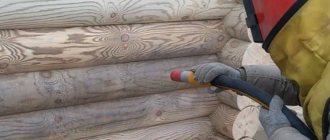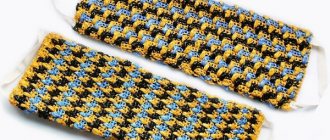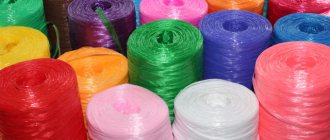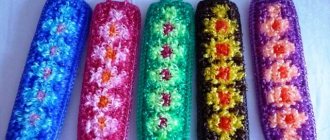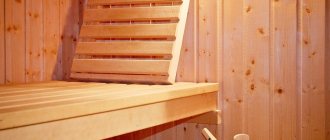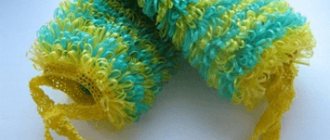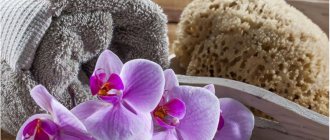This personal hygiene item was known to humanity at the very dawn of the bath culture. The ancient Greeks used bronze and crushed marble chips to cleanse the skin, the Romans used pumice, the eastern peoples used sand, our ancestors used wood ash and linden bast. Nowadays, during the triumphant procession of hand-made items, one is just asking for a washcloth made by oneself to be placed on the bath shelf, and not purchased on sale at the nearest household chemicals supermarket. Well? Let's evaluate the possibilities and consider options?
Features of making a washcloth with your own hands
For most handicraft lovers, the process of creating a craft is important, but there are also those who focus on the applied properties of homemade creativity. Creating a washcloth crocheted or knitted combines these two principles - practicality and beauty. Knitting washcloths is interesting and simple for beginners, but if desired, it helps to deepen your knowledge of various knitting patterns and techniques. And, of course, this item is always relevant in everyday life, so any attempts to master new patterns or develop new ideas will be crowned with success - the craft will find its application in the bathroom.
Dermatologists recommend changing body hygiene products as often as possible. If the bath item is made of synthetic fibers, replacement should be done at least once every 2 months. Natural fibers are not as durable, and you need to change your body washcloth at least once every 4 weeks. But it’s not always possible to run out to the store and choose a new sponge of suitable size and hardness, but creating a washcloth will take very little time even for beginners.
An important factor that influences the choice in favor of a homemade washing device is the ability to vary the materials. You can independently select the yarn and knitting density by adding various herbs to the weave, which increases the cleansing and healing effect on the skin of the body and face. At the same time, you can create double-sided washcloths yourself: one side for massage and light exfoliation, the other for soft cleansing of the skin. An individual approach to hygiene will improve the condition of the skin.
Regular replacement of the dishwashing sponge is considered equally important. This type of washcloth is very easy to crochet for beginners. Depending on the tightness of the knitting, the craft can even serve as a light scraper. At the same time, the consumption of detergent will be several times less, because thanks to the airy structure, such a sponge will foam perfectly.
The ability to change the design and pattern of the sponge is another plus of such crafts. The size and color, and in some cases, even the pattern of the washcloth, is a matter of taste. But washcloths skillfully chosen to match the tone of the interior reveal that you are a housewife with delicate taste. If there are small children in the house, then a bright craft will help quickly and cheerfully accustom your child to regular hygiene and washing dishes.
What threads can be used
In principle, you can use any thread to knit washcloths. They are chosen depending on how hard you require this bath accessory.
If the skin is delicate - for children and ladies - you can use sheep or goat wool. Only we are talking about homemade threads, and undyed ones. Wool can be bleached, but it is better not to use dyed wool - it sheds heavily. Wool sponges are not rough, but slightly prickly, which gives a good massage effect - due to the “work” of small hairs. When using wool washcloths, they should not be immersed in hot water - only in warm or cool water. Otherwise, they “sit down” and become several times smaller in size and become very dense and even hard. They also need to be dried thoroughly: wet wool is an excellent breeding ground for bacteria, so we dry it well.
Before knitting a washcloth, it is advisable to wash household wool (if it is in skeins) in warm water with shampoo or soapy water. To prevent moths from eating the threads, they are treated with gasoline. Therefore, they are first washed and dried, hanging a load from the skein so that the threads do not twist. Then they are unwound into balls and only then knitted.
Washcloths are knitted from homemade natural wool
A universal option is polypropylene yarn. It comes in different thicknesses and densities, so you can knit a washcloth that is harder for active massage, and softer for delicate skin. The degree of stiffness also depends on the density of the knit. Polypropylene thread is the same as packaging twine, only thinner and wound into bobbins, so if you have twine, you can use it. But a sponge made from twine often turns out to be too hard, although this depends on the characteristics of the fiber. In any case, you can try.
There are a lot of positive aspects to their use of polypropylene threads for washcloths - the paint does not wash out, they do not fade (features of the technological process), and they are not demanding on the water temperature (just don’t put them in boiling water). They dry quickly - water is not absorbed into the fibers and drains quickly. Perhaps their only drawback is that they are not of natural origin. But the properties are remarkable (chemically neutral, hypoallergenic, bacteria do not multiply on them) and therefore most of the washcloths are knitted from polypropylene beaches.
Polypropylene threads for knitting washcloths
Read about how to make a bathhouse hat here.
Materials for making a washcloth
Daily washing and showering is not just hygiene, but improving the health of the body, so you should choose the right washcloths for the bath. The material and knitting should be selected depending on the individual skin condition. Other key parameters are:
- Composition of yarn for knitting . Both synthetic and natural fibers are available commercially. Don't forget that natural and polypropylene sponges have different shelf life.
- Material hardness . Rubbing with hard sponges improves blood circulation and helps exfoliate rough skin, while soft sponges protect sensitive areas from unnecessary irritation.
- Possibility of foaming . Here, not only the material plays an important role, but also the technique you choose. The largest foamy cap is created by a washcloth with elongated polypropylene loops.
In specialized craft stores you can choose both synthetic and natural fibers for crafts. The most popular materials are:
- Nylon . It has an excellent exfoliating effect, foams well when knitted loosely, and the sponge itself, even when wet, remains quite strong but elastic. A huge color palette is not the last advantage due to which the choice of needlewomen falls on nylon. Using nylon threads you can recreate any color scheme of the washcloth.
- Polypropylene cord . Suitable for quick knitting of anti-cellulite washcloths. Such crafts are excellent for exfoliation, but are not suitable for sensitive skin.
- Lyko, flax . Due to the special processing technology of the material, split plant fibers are very soft and silky. Bast and linen sponges are suitable for daily care of sensitive skin. New crafts have a slight bactericidal effect, since bast and flax contain a small proportion of phytoncides. The disadvantage of the material is its fragility.
- Birch bark . The material made from birch fibers contains a unique substance, betulin, which is considered a natural antiseptic. This washcloth cleans very gently and gently, but should be used no more than 2 times a week. Some argue that birch bark bath sponges perform their functions even without soap.
- Jute . An affordable and very easy-to-work material, massage washcloths and mittens are created from twine. To increase the rigidity of the material, it can be impregnated with special water-repellent compounds, but those who like to gently clean the skin can also use ordinary fiber. After use, such a washcloth should be dried thoroughly.
- Rami . Very strong fiber from Asian nettle leaves. Such threads for washcloths are very durable, they help intensively, but quite delicately massage the skin, improving blood microcirculation and stimulating skin regeneration.
- Sisal . Material with increased rigidity. It is not recommended to use sponges made from Mexican agave fibers more than once a week, and such material is not at all suitable for sensitive skin. But they are the best choice for anti-cellulite massage. The disadvantages of the material include its fragility. Such sponges quickly become dirty and require replacement.
In order to knit a washcloth, you will also need a hook or knitting needles (depending on the technique chosen), scissors, and loop holders. A minimum set of tools is enough to create your own hygiene kit - for the face, for the hands, for the body.
Note! Proponents of a healthy lifestyle are increasingly talking about using natural loofah washcloths. This is not yarn, but a spongy material from the inside of a plant from the Cucurbitaceae family. The whimsical shape of the sponge is created by nature, not by a needlewoman.
Lyko
A natural weaving material obtained from the bast of certain trees, mainly linden.
Bast is the bast of young linden and other deciduous trees. Young tree trunks (up to 10 years old) are used to harvest bast. This is mainly linden, but there may also be willow, elm and others. To make bast shoes, 3-4 linden trees are required.
Lyko in the craft
According to numerous studies, bast has long been used as a durable and inexpensive material for weaving. First of all, shoes were made from it. Mostly these were bast shoes.
Also, mats were woven from bast. Ropes made from this material were used in fishing and hunting, as well as on the farm. These ropes are quite resistant to abrasion and water.
Bath sponges made from bast are still popular. The fibers are stitched and made into bath slippers, hats and other accessories.
Of course, people used bast to make toys for the amusement of children. They knitted dolls and added wooden toys to them, making manes and tails for horses or braids for dolls.
Bast prepared for further use
Until the 15th century, the equipment of Russian troops included chain mail made of oak bast and bast shields. From the same material in Russia “they wove baskets, boxes, coolies, tues and even chairs and tables.”
Story
The first mentions of bast in Russian sources date back to the 12th-13th centuries. In particular, the chronicle from 1205 names bast as one of the tribute items:
“The Russian princes fought with Lithuania and Yatvingia, and having defeated them, imposed tribute on them, bast and scabbards and brooms to the bathhouse.”
- A. Kurbatov. Rus' is not bast (Rodina magazine, No. 6, 2001).
Woven bast shoes have long been known among the Eastern and Western Slavs, among the Baltic peoples, among the Finno-Ugric peoples and in the coastal regions of Sweden.
However, bast was most often used in the production of bast shoes. Back in the 18th century, this type of footwear was popular not only among peasants, but also among townspeople. Until the second half of the next century, bast bast shoes remained the main footwear in villages and hamlets of the black earth provinces.
“Moscow” bast shoes, made of bast
Extraction and processing
Tambov peasants harvested bast in the spring: at this time, “young trees called lutoshki were cut down in the forest. Having cut off the branches of the felled tree, they began to tear off the bast, which looked like stripes...”
In the North of Russia, it was customary to harvest raw materials for weaving “from the Annunciation to Trinity, since at this time the bark is still soft.” The inner part of the bark removed from the linden tree was subjected to special processing. For example, among the Mordovians, bast was soaked in water to give the material the necessary flexibility.
In Northern and Central Russia, bast craftsmen had certain “standards” related to learning the craft, the beginning and completion of work, and the timing of bast harvesting.
One of the Vladimir peasants described the process of transferring skills from generation to generation:
“My father taught my brother from the age of six... First, go for the bast, then soak it, and then weave.”
One of the researchers describes the properties of bast and the technique of weaving bast shoes among the Mordovians:
The bast, soaked in water, did not break and could bend in any direction. Therefore, for the manufacture of shoes, the most acceptable technique of oblique weaving was invented, which gave greater density and a clear design of the outlines of various products. Using a kochedyk, several layers of bast were added to the sole, which increased the strength and extended the wear life of the bast shoes.
— T. A. Kozlova. Coverage of trade and craft activities in the oral and poetic creativity of the Mordovian people... - P. 334
Not only shoes, but also other household items were made from bast. Thus, in the life of the Mordovians, one of the main elements of utensils was a “purse woven from bast.”
Bask conik
The latter looked like a quadrangular box made up of two halves. Such a wallet was created through “oblique weaving”, using corners and edges. On opposite sides of both parts of the “box” “four bast loops” were attached, into which a strap or twine was threaded.
"All of Russia and the Red Army..."
Entire settlements and even regions were engaged in the production of shoes from bast. Among them:
- the village of Smirnovo in the Nizhny Novgorod province, where the famous “Smirnov bast shoes” were made
- Semenovskoye village (near Kineshma)
- village of Myt, Shuisky district (Vladimir province)
- Tambov craftsmen supplied bast shoes “to all of Russia, including the Red Army...”.
Folklore
There are many proverbs associated with bast; it is mentioned more than once in fairy tales and songs.
In the Russian language, many proverbs and sayings are associated with weaving from bast: “You don’t sew with bast”, “You don’t knit with bast”, etc. The expression “Not every bast is in a line” comes from the Lapotniks: a real master knew “which bast in which line, then there is a row to weave in.”
- The beard is like a broom, but not a bad one.
- The beard is big, but he has no brains.
- Even if he sews with bast, he washes with soap.
- And lychny, but not superfluous.
- And the husband sews with his bast.
- It is tangled from a strip and stuffed with a strap.
- No matter how bad it is, it’s a neighbor.
- You take it with the strap, you give it back with the strap.
- If you spare a strap, you won’t get stuck with a strap.
Article prepared based on materials: Wikipedia, CC BY-SA 3.0, 1-5 photos: Guide to Russian Crafts, CC BY-SA 3.0
Related Articles
Linden
Aspen
Share link:
- Click here to share content on Facebook. (Opens in a new window)
- Click to share on WhatsApp (Opens in new window)
- Click to share on Pinterest (Opens in new window)
- Click to share on Skype (Opens in new window)
- Click to share on Telegram (Opens in new window)
- Click to share on Twitter (Opens in new window)
- Click to share posts on Pocket (Opens in new window)
- Click to share on Reddit (Opens in new window)
- Click to share on LinkedIn (Opens in new window)
- Click to share posts on Tumblr (Opens in new window)
- Send this to a friend (Opens in new window)
- Click to print (Opens in new window)
Liked this:
Like
The best ideas on how to make a washcloth with your own hands
Crocheting or knitting a washcloth is a fun and fairly quick process. However, if you are a beginner craftswoman, choose simple models and patterns for your first craft, for example, a round sponge for washing dishes. As your knitting experience grows, you can move on to creating bath sponges with elongated loops and long handles, as well as massage devices in the form of mittens. Separately, it should be said about creating products from birch bark; if you have all the necessary materials, then making a sponge is not difficult, even without the use of special tools.
Yarn dishwasher
An ideal option for beginner knitters is to create a dishwashing product. It is very easy to make a washcloth step by step: cast on a sufficient number of loops on the hook, knit several single crochets and close the row. If you have a little more time, you can make a multi-colored dish sponge using leftover yarn you have at home.
Necessary materials:
- synthetic fibers - choose colors as desired;
- hook.
How to make a washcloth for washing dishes:
- We put 21 air loops on the hook.
- In the second loop from the hook we make two single crochets, and then one single crochet in each loop.
- On the last loops of the row we make a decrease: on the hook we pull two loops from adjacent chain stitches of the base, stretch the cast-on loops together without a crochet.
- In the second row, we again make a decrease at the beginning (we knit two loops together), and at the end of the row we make an extension.
- Every two rows we change the color of the knitting if you want to make the washcloth multi-colored.
- When there is enough knitting to form a ring, sew the two edges together. You can sew a washcloth with hooks.
The finished product produces a dense rectangular washcloth, already suitable for use in the kitchen. But you can also tighten the free edges so that the craft takes on a neat round shape.
Note! It’s even easier to make such a washcloth with knitting needles, especially if you prefer to use natural fibers for your work. Decreasing and adding loops is carried out at the edges of the row, and the product is sewn together with a regular needle or crochet hook.
Polypropylene fiber shower sponge
Oblong knitted washcloths with long handles are an ideal bath option. If you make the product yourself, you can control the size and stiffness of the knitting. For work, it is better to use polypropylene fiber, and to make the sponge lather better, choose a knit with elongated loops. For extra fluffy foam, you can also put foam rubber inside the knitting.
Necessary materials:
- polypropylene fiber - 1 skein;
- hook of the appropriate size.
How to make a washcloth with elongated loops:
- We put 56 chain loops on the hook (if you want to make the washcloth wider, increase their number so that you get an even number). We close the air loops into a ring.
- Using single crochets we go through 5 rows.
- In the sixth row we knit loops; to do this, before fixing the loop, we yarn over the fiber onto the thumb.
- We knit the next two rows with a regular single crochet.
- We repeat the pattern with loops and single crochet until we get a washcloth of sufficient size.
- We finish the product with five single crochets.
- The handle consists of 4 rows of single crochets. Select the number of air loops individually depending on the length of the handles you want to get.
To make the elongated loops the same, beginners will have to try. It is quite difficult to always keep the yarn over evenly. Therefore, for the first crafts, it is recommended to use a cardboard template: instead of a finger, place an elongated loop on a cardboard strip. The wider the paper strip, the longer the loop will be.
If you decide to knit such a washcloth with your own hands using knitting needles, then use the “Front stitch” pattern for knitting. To get an elongated loop, just make a few yarn overs on your index finger, and then secure the knitting with a knit stitch.
Sponge-mitten for massage and peeling made of jute
For home peeling, it is most convenient to use bath accessories in the form of a mitten. This will simplify and speed up the healing procedure. If you make such a mitten yourself, you can make one side softer - with elongated loops, and the other harder - from a tight knit. A combination of different textures will allow you to best treat your skin. For high-quality hygiene, jute washcloths are suitable.
Necessary materials:
- jute - 1 skein;
- hook No. 6 (you can use a thinner hook, but for beginners the work will be more difficult).
How to make a massage washcloth in the form of a mitten:
- We put a chain of 30 air loops on the hook. If the chain connected into a ring does not fit on your hand, the number of loops must be increased.
- We connect a chain of air loops into a ring.
- We knit two rows with double crochets.
- We knit the third row as follows: in the first half we alternate an elongated loop with a regular single crochet, we knit the second half of the mitten with single crochets, inserting the hook only behind the back wall of the base loop (the pattern should be ribbed).
- We knit 4-5 rows up to the thumb (the number of rows depends on the size of your hand).
- To make a hole for the thumb, we make 8 air loops and through 8 loops on the base we knit a single crochet. Next, we continue to knit the mitten according to the pattern.
- When the knitting reaches the nail plate of the little finger, we begin to reduce the number of loops. Deductions are made every 3 stitches according to the following principle: we knit 3 loops according to the pattern, and knit the fourth and fifth stitches together.
- When the top of the mitten is narrow enough, close the knitting, hiding the rest of the thread inside the mitten.
- The thumb can be left untied, leaving the slit open. But if you want to completely knit the product, then use 16 free loops in the slot. The thumb can also be knitted in a double-sided pattern.
If this jute washcloth seems too complicated for you, try knitting a classic ring that can be fixed exclusively on four fingers. Massage using such a craft will require more time, but will not reduce the effectiveness of the procedure.
Crochet patterns
There are two more types of homemade washcloths - single flat and round. They knit even easier than those described above. There are schemes by which even a beginner can do this.
How to knit a washcloth: single (with or without elongated loops)
Flat washcloth for a bath: crochet pattern
The middle part can have as many elements as you like. Their number is determined by the required length of the washcloth. First, a chain of air loops is also knitted, but it is not tied into a ring. Having made one more additional lifting loop, they begin to knit single crochets, picking up one from the jumpers. Having reached the end of the chain, two stitches are knitted in one loop at the end, which makes it possible to continue knitting on the other side of the chain. And again, having reached the end of the chain, knit two stitches into each jumper and continue to knit on the other side. It turns out to be such a long chain. When the washcloth reaches the desired size, handles are knitted, then the thread is cut and pulled in.
If you wish, you can knit a flat washcloth with elongated loops. They are also added in every second row. You saw how to make them in photos and videos (there are two options), everything is the same here.
Round
For children, it is more convenient to make small round washcloths and disks. The pattern for knitting with double crochets is shown in the figure. The principle is simple: we double the loops through one jumper, and we knit air loops between two adjacent posts.
Crochet pattern for a round washcloth
The number of rows is as you wish. Once the disk reaches the desired size, you can knit two or three rows of single crochets along the edge to seal the edge, but make sure that the edge does not tighten the disk, periodically also knitting two loops into one jumper.
How to knit a round washcloth on your hand using single crochets is shown in the video.
How to knit elongated loops with knitting needles
For those who want to knit a washcloth for a bath with elongated loops using knitting needles, the following video tutorial.
How to make an excellent mesh washcloth for vegetables?
Every housewife has at least once thought about reusing the multi-colored string bag in which fruits and vegetables are sold in supermarkets.
Thanks to our master class, you can bring this idea to life and assemble a washcloth from a mesh with your own hands in just 5–10 minutes.
This washcloth is good for washing dishes, other household chores, bathing and showering. It foams well and dries faster than store-bought ones.
Dish scrubber
To make your own washcloth, you will need 2-4 meshes. It is advisable to wash them first and trim the ends with scissors.
Further course of action:
- Roll the longest net (or several) into a rope.
- Press the ends of the tourniquet to the middle.
- Secure them with a small mesh, also rolled into a flagellum.
- Straighten the edges to form a beautiful bow.
- Ready!
A foam sponge breaks down very quickly. A vegetable mesh washcloth is much more durable, and it is still convenient to use. Try it!
For household needs
Together with a cleaning product, a mesh sponge can work wonders. With its help you can easily clean the bathtub, tiles, kitchen counters, and hob. For greater efficiency, you can make a strong donut washcloth with your own hands.
Master Class:
- Cut a square of approximately 15 by 15 cm from the mesh.
- Fold it in half.
- Take a thread and a needle and sew 2 edges of the resulting rectangle. Do not cut the thread.
- Fill the “pocket” with pieces of string bag through the remaining hole and sew it up too.
- Connect all 4 corners, secure with the same thread and sew to the center of the washcloth.
- Sew a few stitches to create an indentation in the middle. Secure the thread with a knot and cut.
You can not only put a net in the pocket, but also sew up remnants. You will get double savings - a free washcloth and detergent in one item.
For taking a shower and going to the bathhouse
Those who love hard washcloths for the body will certainly appreciate this homemade mesh device. Like the previous options, it’s not difficult to make it yourself.
Step-by-step instruction:
- Take the onion net (it is usually elongated), wash it and dry it. The longer the string string, the better.
- Cut off the bottom and carefully cut off the top. You will get something like a sleeve.
- Place your hand through it and roll up the edges.
- At the end we have a bagel, which should be twisted into a figure eight and folded in half.
- Insert a strong thread or twine 30 cm long into the hole and tie it.
- Straighten the mesh edges and the washcloth will take the shape of a rose.
- Form a loop of thread. Pass the end of the twine (10 cm) through the part that holds the mesh. Make a small loop and tie a knot. Now you can hang the washcloth on a hook in the bathroom.
A homemade washcloth made from a mesh for vegetables is an ideal option for exfoliating the body (exfoliating the stratum corneum of the skin) and increasing blood circulation. They say that with regular use it helps restore skin tone and reduce the appearance of cellulite.
Using the same instructions, you can repair a purchased washcloth if it suddenly comes loose:
Loofah for whipping foam (for washing)
Not all women know, but cleansers work much more effectively in the form of foam. Koreans even produce special nets for whipping it. But why overpay if you can make an almost identical device with your own hands from an onion string bag?
Master Class:
- Sew a rectangular mesh pocket.
- Cut the foam dish sponge into large squares.
- Place them inside your pocket. Sew up the hole.
- Place the foam squares on both sides of the mesh.
- Tie the rectangle in the center with twine and form a loop for hanging.
Using a washcloth to wash your face is very simple. Wet it and add just a few drops of cleanser. Actively rub the product and squeeze the foam into your palm. Apply it to your face without touching your skin with your fingers. The result will certainly please you.
Thus, vegetable mesh is an indispensable thing for creating washcloths. You can make kitchen sponges-bows, bath roses, bagels for household needs, and a Korean-style washing net from a string bag. Choose the option you like and follow the step-by-step instructions.
Source: https://mschistota.ru/sovety/sobrat-mochalku-iz-setki.html
